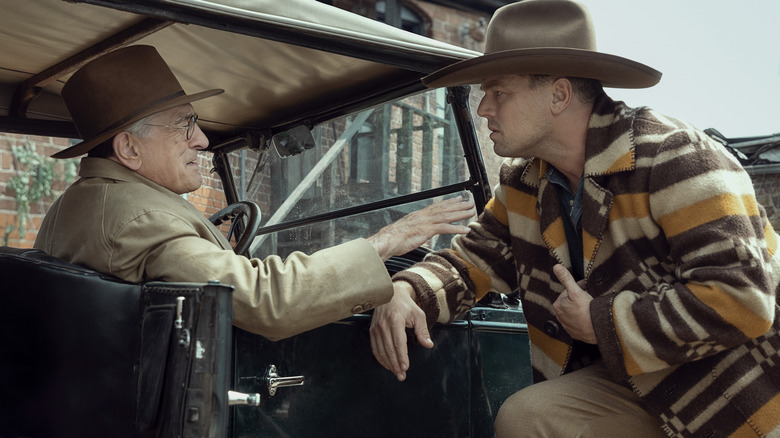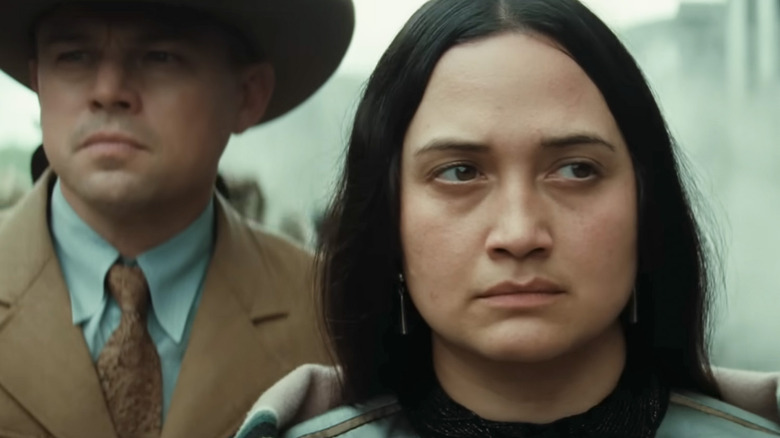Killers Of The Flower Moon: Let's Talk About That Massive Final Cameo
Contains spoilers for "Killers of the Flower Moon"
"Killers of the Flower Moon" is based on the devastating true story of a series of murders that struck the Osage Nation after oil was discovered on its reservation. As it turns out, the murders were carried out by the Burkhart family and others affiliated with them, who, despite seeming to care for the Osage, murdered various people in an attempt to acquire their oil headrights. The film ends by showing what happened to key players in this plot, particularly the Burkarts, who eventually faced trial for their crimes.
Whereas many true-story films end with written descriptions of what happened to the characters following the events of the film, "Killers of the Flower Moon" follows a different path. It comes to a close with an old-timey radio stage play where actors state what happened, such as William King Hale (Robert De Niro) being sentenced to life in prison for his role in the murders but ultimately being released on parole in 1947. The final person to get closure is Mollie Burkhart (Lily Gladstone), an Osage native who saw her family get killed one by one. To read what happened to her, a radio news producer whom we haven't seen yet takes the stage, but he should look familiar to any cinephile as Martin Scorsese himself shares Mollie's fate with the audience.
Scorsese's character reveals that Mollie divorced Ernest (Leonardo DiCaprio), remarried in 1928, and passed away in 1937. His presence adds an extra sense of gravitas to the description, almost pulling the audience back to reality and reminding them that these were actual people who suffered at the hands of white usurpers.
Martin Scorsese's cameo serves as a punctuation mark on a gripping tale
It's common for directors to give themselves cameos in their movies, as evidenced by the likes of M. Night Shyamalan and Quentin Tarantino. Martin Scorsese also falls into that camp, going all the way back to his 1967 film, "Who's That Knocking at My Door." His cameos have often been uncredited, taking on a blink-or-you'll-miss-it quality, but that's not the case with his role in "Killers of the Flower Moon." He literally takes center stage, almost demanding the audience's attention, making sure they listen to what happened to Mollie Burkhart.
Not many directors could get a 206-minute epic Western featuring a large indigenous cast with a budget in the neighborhood of $200 million made these days. But few filmmakers are on the same level as Scorsese. He undoubtedly used his reputation to get "Killers of the Flower Moon" greenlit, and his reputation again comes into play in the movie's final moments when any sense of "entertainment" is stripped away in favor of revealing how Mollie died far too young while King got out of prison and lived for many more years. It's a moment of reflection, and Scorsese clearly wants people to view movies as an art form and as something greater than a mind-numbing distraction.
In an interview with AP News, Scorsese spoke about his desire to elevate cinema: "The next generation may not see it that way because as children and younger people, they're exposed to films that are wonderful entertainment, beautifully made, but are purely diversionary. I think cinema can enrich your life." "Killers of the Flower Moon" is one such enriching experience and one everyone should see on the big screen, with it playing in theaters now.

